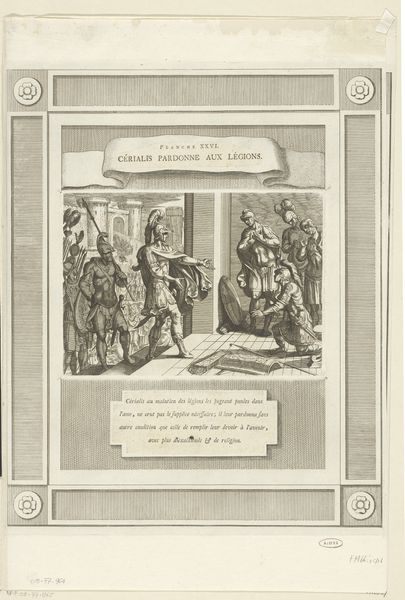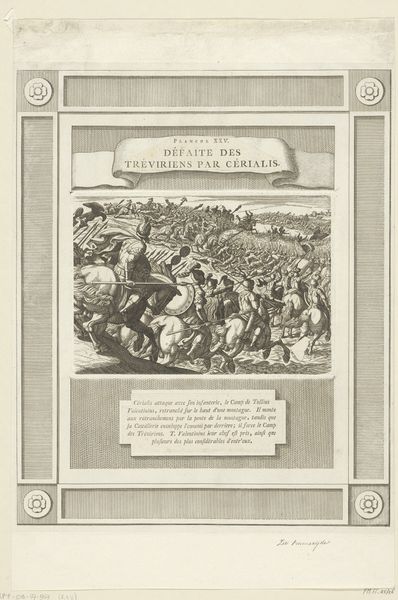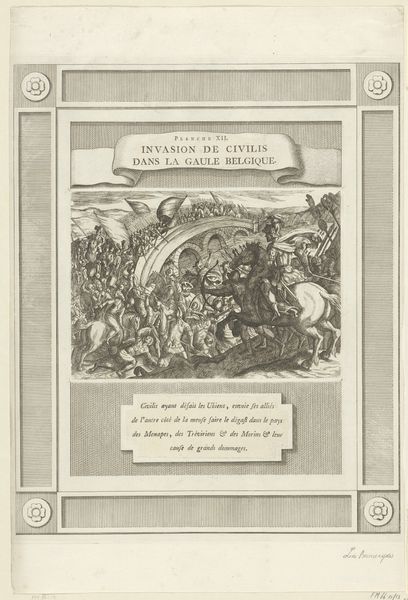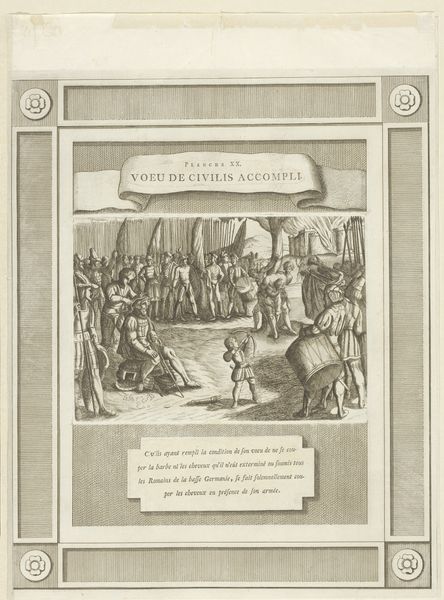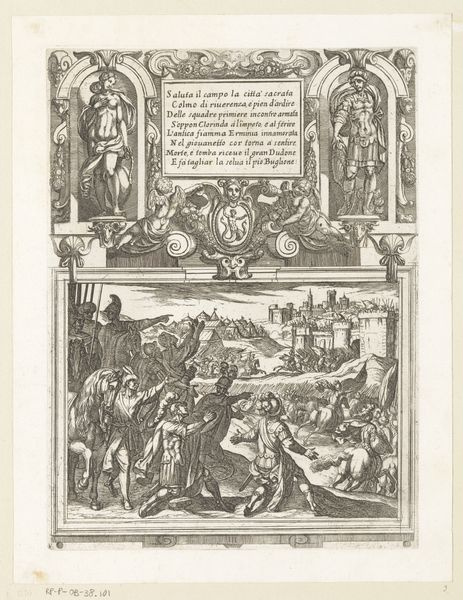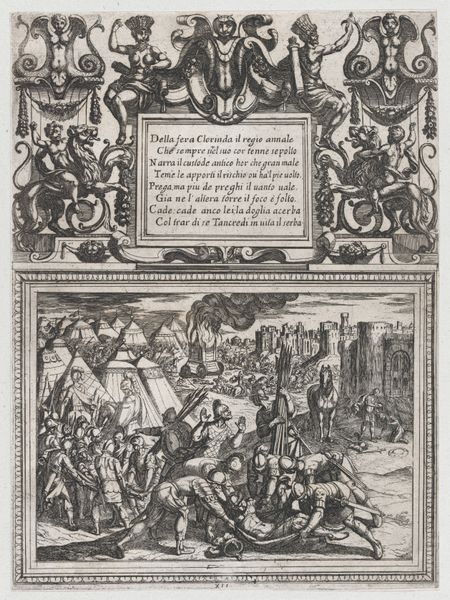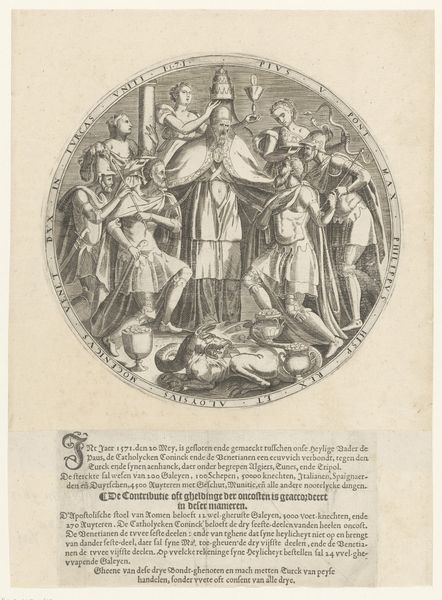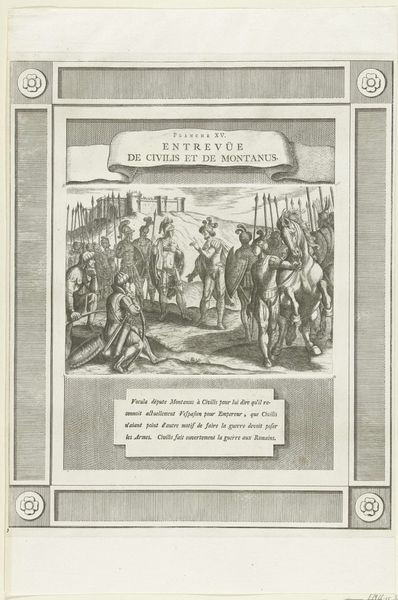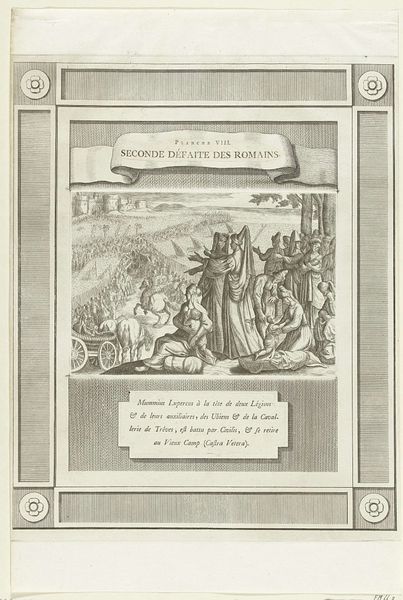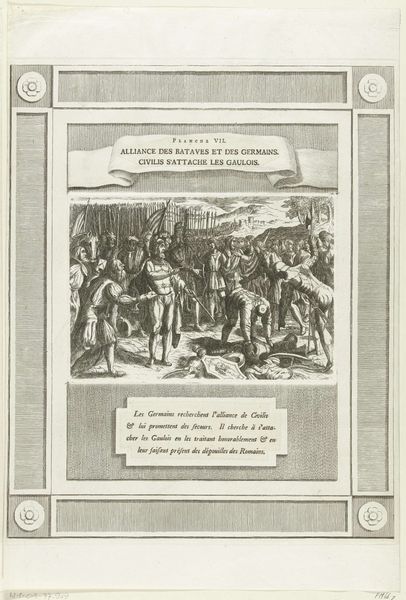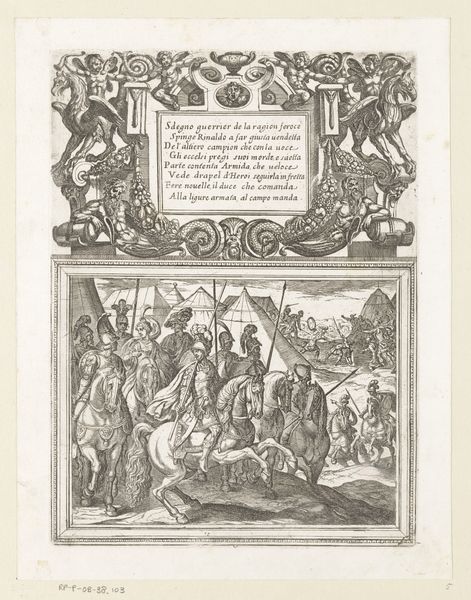
Dimensions: height 140 mm, width 202 mm, height 370 mm, width 300 mm
Copyright: Rijks Museum: Open Domain
Editor: This engraving, titled "Gezanten uit Keulen brengen Civilis geschenken, 69-70," from around 1768 to 1770, depicts a historical scene. It is currently housed in the Rijksmuseum. The figures seem quite theatrical and positioned, not natural at all. How would you analyze its composition? Curator: Let's look at this print through a formalist lens. Notice how the artist meticulously renders line and form. The central grouping is framed by the receding lines of the landscape, directing our vision toward the handshake – a crucial focal point. Ask yourself, what kind of movement does that placement create in your eye as a viewer? Editor: The lines indeed create a sense of depth. So the relationship between the lines suggests movement but, what about other components, for instance, that writing at the top? Curator: Good question, what we consider here is only the line and shapes within that top text block to establish that sense of framing as well. Disregarding context, consider that the figures within this print are arranged to lead our eye sequentially from left to right as well as backward towards the city behind them in the center background. Do you think the city behind is an important detail here? Editor: Absolutely! Without the lines that draw the eye backward, the eye might fixate on the right foreground of this work. Considering how the frame of this engraving plays with directionality suggests to me a great deal of balance. Thank you for this helpful analysis! Curator: Exactly, this print functions based on what is included as much as what the artists choses to exclude. Looking at how forms arrange themselves within this image allows for this symbolic reading to develop for the viewer, and that form of reflection is as valuable as the image.
Comments
No comments
Be the first to comment and join the conversation on the ultimate creative platform.

